Notes on a visit to North Cerney, Bagendon and area,1984
My family and I, John Eacott, visited several locations associated with the Eacott-Eycott name during July and Aug.1984.
At Rendcomb we visited the church, but found no legible tombstones. Rendcomb manor is now a college and the hamlet shares the church with them. The west side of the property drops off steeply to the Churn river directly above the manor site of Eycott. There is a good view over the slopes of Eycott manor. Below the College and along the west side of the Churn river is a parcel of a few acres of land which belongs to Carron Mann, a Bristol jeweler. They live in the renovated 16th century Lodge farm or Rendcombe Lodge as it is now called. They pointed out some depressions in the land which may outline the foundations of some ancient buildings. Just back of the house is a smallish stream lined with trees. Its banks have been modified by the construction of a fish pond 150 years ago. In the past this land was likely quit low and likely prone to flooding. From this point the lands of Eycott manor can be seen rising toward a hill ridge to the west.
The property known as Eycothouse, was built in the 1930's and the son of the present owner said the site had been an old rabbit warren and there were still some old ruins located there. This may also have been the site of the Eycott Farm buildings which made them more accessible to the property than from the river.
At North Cerney we visited a village fete(fayte) and met a number of local persons as well we learned about Welly Wanging. At another time we attended evening service at the church. People there knew of the Eacott-Eycott name but no one had ever met a living person called by those names. A stained glass window in North Cerney church was labeled with the name BICOTE and was elsewhere identified by the church records as an error that should read Eicote. There were no stones we could read in the churchyard. There were some old chests and lecterns in the church dating to the 1600's and some references attribute them to the gift of the Eycotts. The church is west of the river, across from the village. There is no resident minister but Miss Peggy West a lay reader is quite active in the affairs of the church.
Local people know the name as AY COTT or A COTT or "Ache-it" in their pronunciation.
At Bagendon, the church was nestled at the bottom of a slope. There are few buildings at Bagendon and it appears very little has changed there for a very long time. Tombstones were not readable here either. The road to North Cerney and the two roads to Woodmancote wound over a hill and along a ridge of land.
Woodmancote hamlet sits on a high spot where the roads from Bagendon and North Cerney converge. The Moor, the old manor identified with the Eacotts was on the south side of Woodmancote perched near the head of a ravine or sharp little valley which opened out to the south. The yard of the place was dominated by a huge Lebanese cedar planted four or five hundred years ago according to the owner, Major E.R.W Robinson. He and his sons operate a farm of several hundred acres(sheep and grain). The Major was interested in local history and said the Saxon word for island, EYOT was pronounced ATE. He also said there were remains of a minor Roman farm and an iron age fort located on his lands over toward the Eycot manor lands.
Major Robinson also told us that excavations would be taking place at this site in September 1984 by Steven Trow, 12 Lloyd Square, London. The site is known as the ditches. The Robinson's had no knowledge of the Eycotts but it is quite possible the cedar was planted by an Eycot.
The entire area was very hilly with houses nestled in the small valleys mostly in little villages. The hills had a golden color from the ripe grain. The homes were built of stone of the same color. A very pretty area.
Further south we visited Purton, in Wiltshire where my ancestor Charles was believed to have been born, and learned that the church congregation had sponsored missionaries to Canada in the early 1700's. The first S.P.G. Missionary went out in 1702 on the Centurion. A book on church history written in 1927 said this of the year 1837. " In the years following the Napoleonic Wars much poverty and consequent misery was obtained. It is said that no less than 500,000 persons died from starvation. Purton felt its share of bad times and it was thought well to encourage emigration to Canada. A deed dated 22 May 1837 contained an agreement between church wardens and overseers in Purton and a Mr. Robert Carter of 11 Leadenhall St.,London."
21 persons from Purton were sponsored to Canada to land at Montreal. They and their luggage were to be landed free of charge and food allowances were given as well as medicine and wine. Such things as wooden bowls, platters, hook pots, etc. were specified for each person over 14 and a special supply list for each person under 14 was given. All taxes were met and the fare was seven pounds five shillings for an adult. Children under 14 were half fare. A second lot of persons were sent out in 1844. Some of the names of those sent were Sealy, Maule, Cutts, Tuff, Turner, Baker. One wonders if Charles Eacott, the first known Eacott in Canada (1830) may have experienced these problems and set out from Purton just before this group of immigrants sending word back of the conditions abroad.
Once again I visited the area in 2005. Both North Cerney and Bagendon churches showed more care and attention than they had in 1984. The communities looked almost exactly the same. Only the nearby Cirencester road bypass had altered the scenery. We had the opportunity to visit with the son of major Robinson, as the major died the year after our first visit. A minister now serves the two churches.
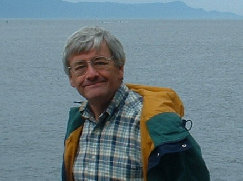
ME 2003
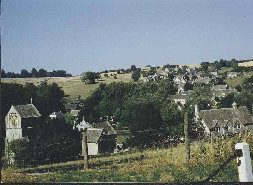
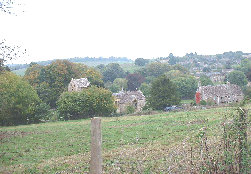
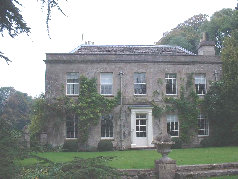
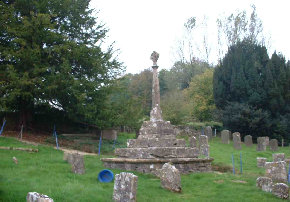
Monument Cross North Cerney
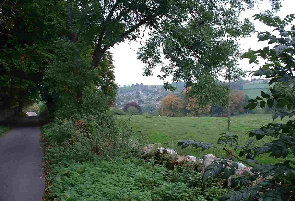
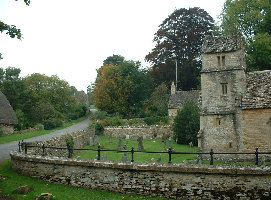
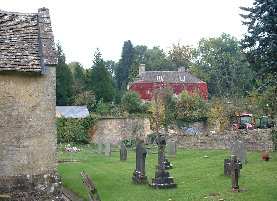
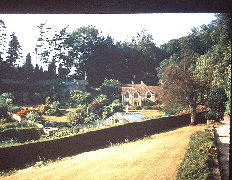
Moorwood 1984
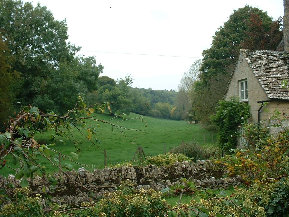
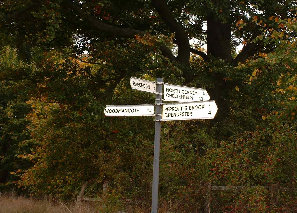

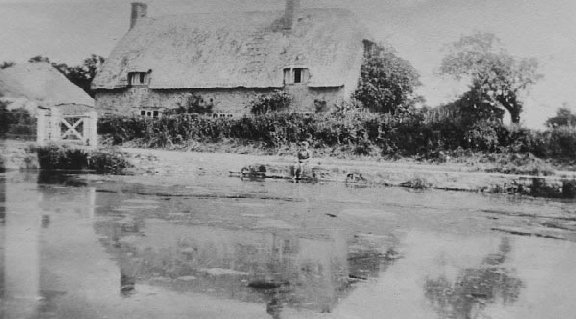
Boon Cottage, Cow Lane, Purton Stoke, Wilts. home of John Eacott age 65 in 1840
He had two brothers
well settled in America. The cottage is now gone.



Check out these web sites for photos of North Cerney and the community















